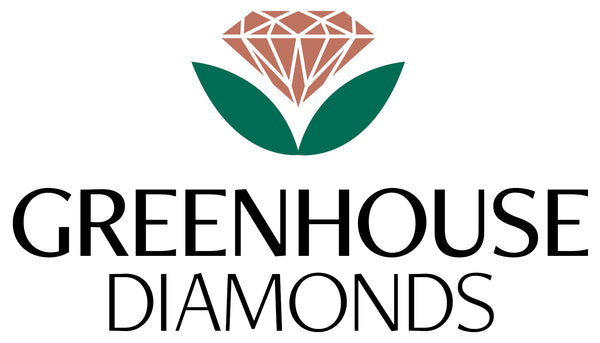Learn about Lab Grown Diamonds by Greenhouse Australia
Mined diamonds are no longer the only choice for engagement rings. Environmental concerns and advances in technology have made alternatives a reality and to the Eco-conscious consumer-preferable. Laboratory grown diamonds are free of conflict, more affordable and superior to mined diamonds in every way.

Greenhouse Diamonds are grown in highly controlled laboratory conditions that simulate the natural growing process which occurred deep within the Earth’s mantle. The result is a diamond that is physically, optically and chemically identical to a natural or mined diamond with minimal impact to the environment.
We work closely with the world’s most scientifically advanced diamond growers and grow our diamonds from the finest diamond seeds. Our dedicated laboratory grown diamond cutting facility ensures all of our diamonds are expertly cut for maximum brilliance by our master cutters. Every Greenhouse Diamond is categorised as Type IIa - the purest form of diamond.
Every Greenhouse Diamond (0.50ct and over) is then graded and certified by the same leading independent gemmological laboratory that is used to grade mined diamonds - ADGL Australian Diamond Grading Laboratory.
At Greenhouse Diamonds we guarantee that all of our diamonds are laboratory grown.

Environmental Impact
Approximately 1750 tonnes of earth has to be extracted to find a 1.00ct rough diamond and each year over 150 million carats of diamonds are extracted from the Earth through mining. An extreme case of a large diamond mine was an astonishing half kilometre deep with a diameter of 1.2km. This mine was so deep that it was suggested it had the ability to “suck in” helicopters as they flew over it.
Mining involves enormous amounts of soil being removed and processed in often horrific conditions. Although it is not allowed, waste from mining operations often gets dumped in surrounding areas. The open pits then fill with stagnant water and become a breeding ground for mosquitoes that spread disease to workers and nearby residents.
Pollution from mining causes the deaths of plants and animals and land degradation makes areas unsuitable for farming. Plants and animals do not survive as their habitat is destroyed leaving communities with a limited source of food.

The blasting methods used in mines create dust clouds that lead to diseases and residents fleeing the area. Furthermore, workers often breathe the dust and hazardous chemicals causing lung ailments.
Fortunately, technology has evolved allowing consumers to purchase an optically, chemically and physically identical product that is free of any negative social, environmental or humanitarian concerns. Greenhouse Diamonds are environmentally and ethically superior to mined diamonds. As consumers we hold the power and we can make a difference.
Laboratory Grown Diamonds vs Diamond Simulants
Diamond simulants, such as cubic zirconia and moissanite, look similar to diamonds but are not true carbon crystals. Simulants do not have the same chemical and physical properties as natural diamonds and therefore sell at much lower prices than laboratory grown diamonds. Simulants can be distinguished from natural or laboratory grown diamonds using only the naked eye.

How Greenhouse Diamonds are grown using the CVD method:
Although Greenhouse diamonds are sometimes grown with the CVD or Chemical Vapour Deposition method, for most of our stones we prefer to grow using the HPHT or High Pressure High Temperature method.
Diamond is a covalent crystal in which carbon atoms are strongly bonded to each other. This structural feature leads to the highest hardness among all natural materials and gives it superior thermal conductivity, as well as excellent chemical stability and ultimately its beauty due to its brilliance and transparency. Diamond has been used in a wide range of industries outside of jewellery for many years. Growing Greenhouse Diamonds using the temperature gradient method under HPHT is done at 5.4 GPA and 1500 K in specially designed cubic anvil high pressure machines.
We use only the highest purity graphite powder (99.99%) as the carbon source and place in the higher temperature region of the growth cell.
High quality synthetic diamond grits about 0.8 mm across, which is less than ½ the thickness of a 10 cent coin is used as seed crystal, with a square surface about 0.5 mm × 0.5 mm as the growth surface. These are placed in the lower temperature region of the growth cell.
The conventional Fe70Ni30 alloy and a newly devolved alloy are then used as the solvent metal respectively, which are placed between the carbon source and seed crystals.
After HPHT synthesis, the temperature and pressures are reduced and the resulting materials are treated with hot dilute nitric acid to separate the diamond crystals from the FeNi solvent. The crystals are then boiled in a concentrated acid solution for 3 hours to remove any residual graphite and solvent on the surfaces of the crystals.
Although this process may sound quite easy please keep in mind our best growth result so far is an axial growth rate of over 0.08mm per hour, or about the thickness of a 10 cent piece per day.

